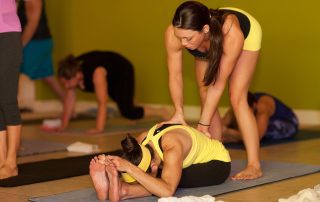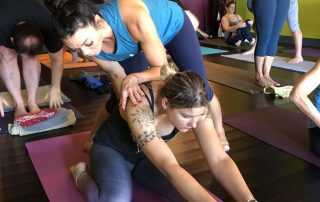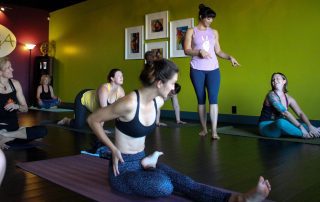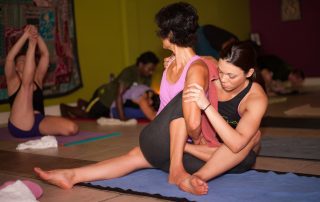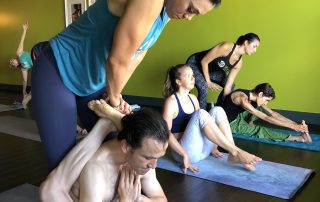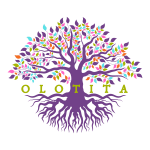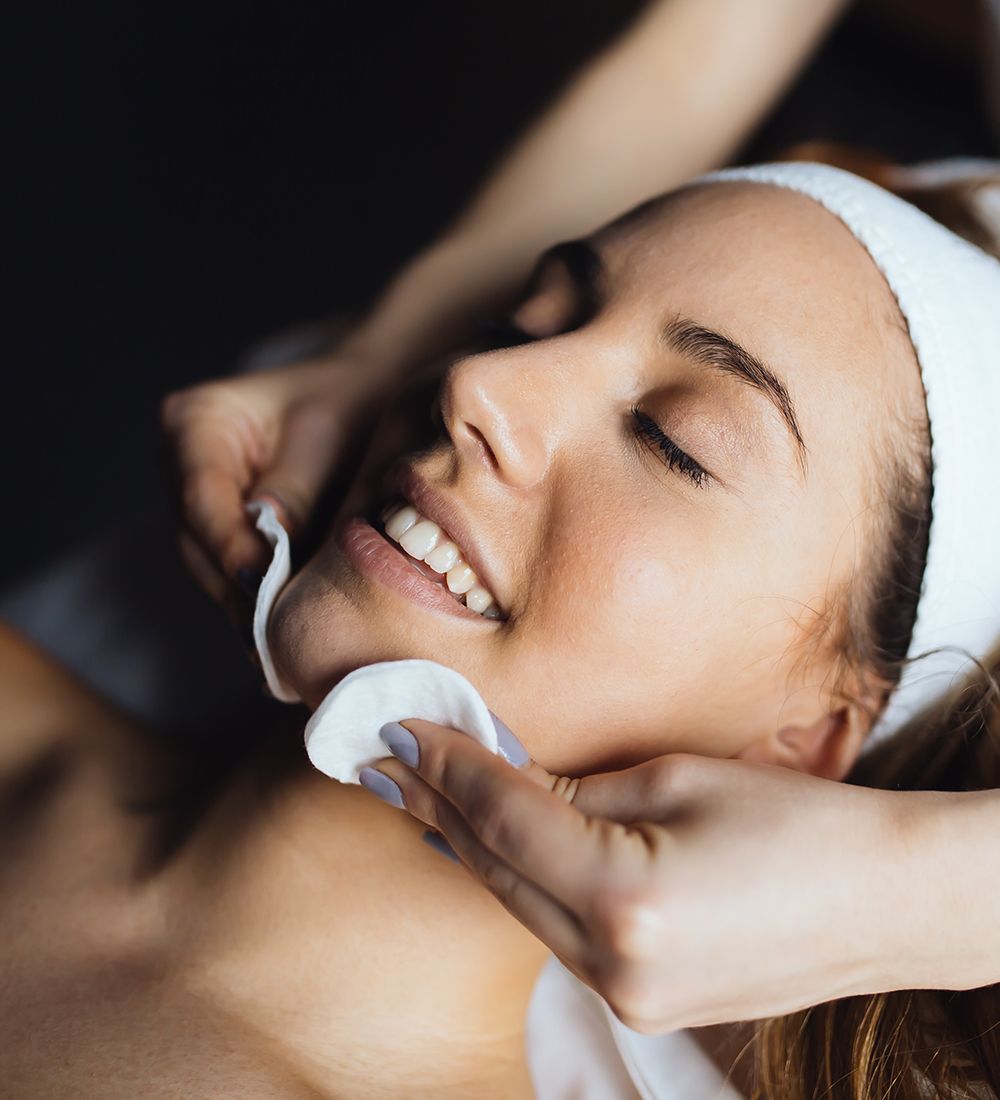Ashtanga Yoga:
Olotita’s yoga school, The Yoga Shala, is based on teachings of the Ashtanga Yoga, or eight limb system. This very ancient practice is intended for those seeking a deeper connection and understanding of the external world around them, and the internal and external world of self. The yoga method starts the seeker at its third limb, called the Asana, or physical movement with breath practice.
Ashtanga Yoga has eight limbs. Each has many branches, just like the limbs of a tree. The first limb, for example, is comprised of moral codes for how to treat and care for the world around you. These moral codes are broken into five separate branches of what this entails. The second limb is made up of moral codes for how to treat and care for self, again broken into five separate branches. The third limb, the Asana limb, contains six separate branches or series of Asana. Breath with movement sequences. Using the Mysore method, each and every practitioner works to master these in order, sequentially, over time.
Learning Ashtanga Yoga:
Every student starts at the same place … which is wherever they are! If new to this yoga method, you will start at the beginning, with the Asanas of the Ashtanga Yoga Primary Series. The primary series is the first of six series’, known properly as Yoga Chikitsa (which means “Yoga Therapy”). If you had an established or semi-established practice that fell away, you will start over and rebuild your foundation to be solid this time! If you have an established Ashtanga yoga practice, you are welcome to join our community where you are. Whether primary, intermediate or advanced series – and receive guidance from where you are. Each student slowly works to learn and apply the fundamentals of deep breathing, coupled with sound, awareness, and education and application.
The Process:
This leads to eventual knowing of specific gaze or looking points to master the skills of focus; education, awareness, application and eventual mastery over internal muscles to guide and direct our practices; a set of time tested movements in a sequence, and mastery over those movements, before attempting more advanced movements that require mastery over those that come before them. These principles apply regardless of whether you are working to master primary or advanced series postures – by design, each new asana given provides the seeker with a unique and challenging new set of lessons to learn, skills to acquire and master, discomforts to reflect upon, and so much more.
The practice is so many things. One is that of a Kriya or cleansing practice. Just like washing your face and body and brushing your teeth are cleaning practices, so too is daily asana practice. You must “wash, rinse and repeat” to reap the jewels of the practice – jewels of the emotional, mental, spiritual and mystical world, as well as of the physical one.
Over time, a student will need less and less verbal guidance and cueing from the teacher as they begin to commit the sequence to memory. This occurs as the student begins to be more present in their own body and mind. Practitioners begin paying greater attention to how they are breathing, more attention to how they are holding asanas and breathing, looking into a steady position or how they are breathing, and where they are looking as they move with breath – vinyāsa – from one steady position to another.
Mysore Style Instruction:
In the Mysore environment, the student will begin to develop the skill of self practice and, using this particular Ashtanga yoga method, many others. Students will develop very powerful self-care hygiene skills, mindfulness skills, contemplative skills, skills in self-study, self-awareness skills, skills in humility and gratitude, skills in determination and persistence, and self-motivation and self-direction and self-trust, skills of self soothing and self healing and self love. We use the Ashtanga yoga system to teach the skill of self practice, in the Mysore method, because it offers all these other skills. These are skills that empower the practitioner. Educate and build her/him up. Skills that help us cope with traumas and dramas and terrible unforeseen circumstances with more grace and humility. Skills that no one can take from us, and we don’t need to go anywhere to do or get or experience.
Krista has said she could literally write on this topic for months or years. It first appeared on her first trip abroad, in 2003, during a semester in Greece. She was open and receptive, found the practice interesting, and embraced learning about it with an open heart. She dove in, learned, practiced, applied, changed, grew, evolved … and never looked back. If you are interested in further educating yourself and learning new skills, and can do so with an open mind, pure heart and childlike curiosity, you will be pleasantly delighted by what you find.
Olotita’s Yoga school has four paths for you to begin, start over, or deepen your current commitment to your Asana practice: Mysore Classes, Private Instruction, Workshops or Retreats.

